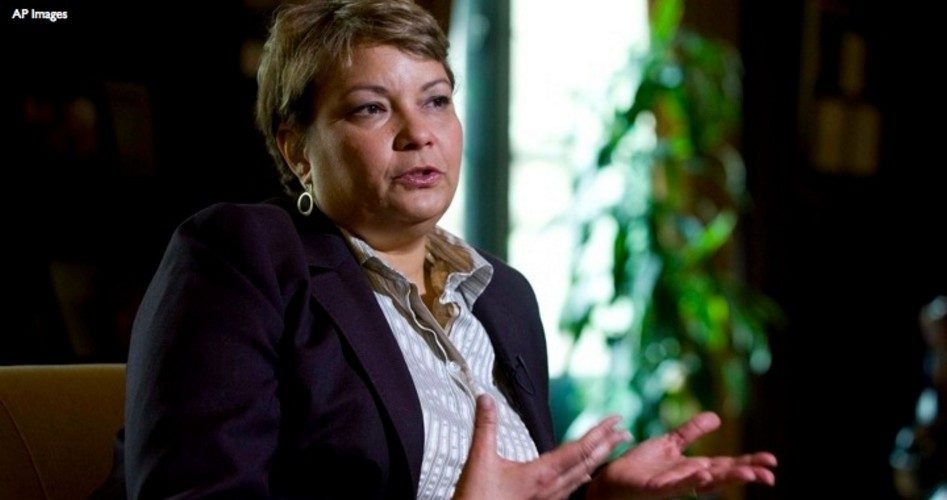
One of the most successful grassroots campaigns during the past year has been the Stop Agenda 21 movement both at the local level and state level. However, we haven’t heard as much about Agenda 21 implementation at the national level.
Of course, there were President Bill Clinton’s establishment of the President’s Council on Sustainable Development by executive order in 1993 and President Obama’s “Federal Leadership in Environmental, Energy, and Economic Performance” executive order in 2009. And, many federal agencies have been incorporating sustainability into various aspects of their organizations. Still, virtually all Stop Agenda 21 grassroots activity has been focused on the local and state levels.
The establishment of Clinton’s President’s Council on Sustainable Development (PCSD) started a pattern of denial by federal government agencies regarding any connection with the United Nations Agenda 21. Even though the PCSD was clearly established in 1993 in support of the UN’s Agenda 21 and its Sustainable Development proposals from the UN’s ’92 Earth Summit in Rio, the PCSD’s statements and documents never referred to the UN and Agenda 21. We have evidence that federal officials were taking pains to make the PCSD appear to be completely separate from the UN’s Agenda 21 because J. Gary Lawrence, an advisor to the PCSD, said the following in 1998:
Participating in a UN advocated planning process would very likely bring out many of the conspiracy-fixated groups and individuals in our society…. This segment of our society who fear ‘one-world government’ and a UN invasion of the United States through which our individual freedom would be stripped away would actively work to defeat any elected official who joined ‘the conspiracy’ by undertaking LA21 [Local Agenda 21]. So, we call our processes something else, such as comprehensive planning, growth management or smart growth.
This helps explain why virtually all federal activities in pursuit of sustainability rarely make any reference to the UN or the UN’s Agenda 21, even though these federal activities are very much in sync with the UN’s Agenda 21.
Nonetheless, there have been very significant developments regarding sustainability at the Environmental Protection Agency (EPA) beginning with its 40th anniversary in late 2010. On November 30, 2010, EPA Administrator Lisa Jackson stated: “Today I am formally requesting President Cicerone and the National Academies convene a committee of experts to provide to the U.S. EPA an operational framework for sustainability that applies across all of the agency’s programs, policies, and actions.”
Jackson added: “Today we have a new opportunity in front of us. We have an opportunity to focus on how environmentally protective and sustainable we can be. You see, it’s the difference between treating disease and pursuing wellness.” The National Academies of Science (NAS) responded with a detailed study, Sustainability and the U.S. EPA (aka the “Green Book”), which cost the EPA $700,000, and which was published in August 2011. The NAS also produced a five-minute video about this project.
Here are some excerpts from the 286-page “Green Book”:
• “The [UN’s World Commission on Environment and Development] called upon the UN General Assembly to transform its [1987] report into a global action plan for sustainable development. The nations of the world did precisely that at the 1992 UN Conference on Environment and Development, or ‘Earth Summit,’ in Rio de Janeiro. These nations, including the United States, endorsed a global sustainable development action plan, known as Agenda 21, and a set of 27 principles for sustainable-development, called the Rio Declaration. Together, these agreements modify the definition of development by adding a third pillar — environmental protection and restoration — to the economic and social pillars of development.”
• “First, the committee recommends that EPA formally adopt as its sustainability paradigm the ‘Three Pillars’ approach of ‘Social,’ ‘Environment,’ and ‘Economic’ dimensions of sustainability.”
• “Sustainability impact assessment is used to analyze the probable effects of a particular project or proposal on the social, environmental, and economic pillars of sustainability.”
Thus, the “Green Book” acknowledges that the nations of the world, including the United States, “endorsed a global sustainable development action plan, known as Agenda 21” at the ’92 Earth Summit in Rio. Next, the NAS committee recommended that “EPA formally adopt as its sustainability paradigm the ‘Three Pillars’ approach of ‘Social,’ ‘Environment,’ and ‘Economic’ dimensions of sustainability.” Which would make the EPA sustainability paradigm exactly in sync with the three pillars of sustainable development agreed upon at the ’92 Earth Summit. Finally, the NAS proposed a new tool for EPA, the sustainability impact assessment, that would be “used to analyze the probable effects of a particular project or proposal on the social, environmental, and economic pillars of sustainability.”
Therefore, it is apparent that the NAS “Green Book” is positioning the EPA to become the premier federal agency for implementing Agenda 21 in the United States.
EPA spokesman are wary in this highly-charged, election-year political climate about making any definitive statement regarding whether and how soon the EPA would adopt the “Green Book” sustainability methodology. However, it is clear from listening to the audio of the November 30, 2010, meeting where the EPA commissioned the NAS to produce a new “operational framework for sustainability” for the EPA that the EPA sees the “sustainability paradigm” as the future for the agency.
Moreover, just to keep it real for those of us accustomed to the American way of life, here is what Maurice Strong, Secretary-General of the UN Earth Summit in Rio in 1992, said in his opening speech to the attendees: “Current lifestyles and consumption patterns of the affluent middle class — involving high meat intake, the use of fossil fuels, electrical appliances, home and work-place air-conditioning, and suburban housing — are not sustainable.” (Emphasis added.)
Based on Strong’s remarks, it doesn’t take much of an imagination to predict just how much downward pressure on our standard of living would be exerted by a sustainability oriented EPA.
It also doesn’t take too much talent at connecting the dots to understand that an EPA based on sustainability, an EPA that wants to pursue wellness, not treat disease, an EPA that wants to use “sustainability impact assessments” to analyze the probable effects of a particular project or proposal on the social, environmental, and economic dimensions of sustainability — that would be an EPA that would aspire to regulate in detail virtually every aspect of our lives, thus completely destroying our freedom and prosperity.
The point of all of the above is that even though the EPA is already guilty of vastly over-regulating us, an EPA based on an operational framework of sustainability would be much worse.
There’s currently no legislation in Congress to stop the EPA from implementing the UN Agenda 21 concept of sustainability. Realistically, given the makeup of Congress, there’s virtually no chance that a bill could be passed this year to stop EPA implementation of Agenda 21.
However, in light of the rapid growth of the Stop Agenda 21 movement over the past year, and the changes that will occur with the elections in November, Congress could very well be more likely to initiate and pass anti-Agenda 21 legislation in 2013. Click here if you would like to send a message to your Representative and Senators about this issue.
Photo at top: EPA Administrator Lisa Jackson: AP Images
This article (slightly modified) originally appeared under a different title at JBS.org and is reprinted here with permission.



